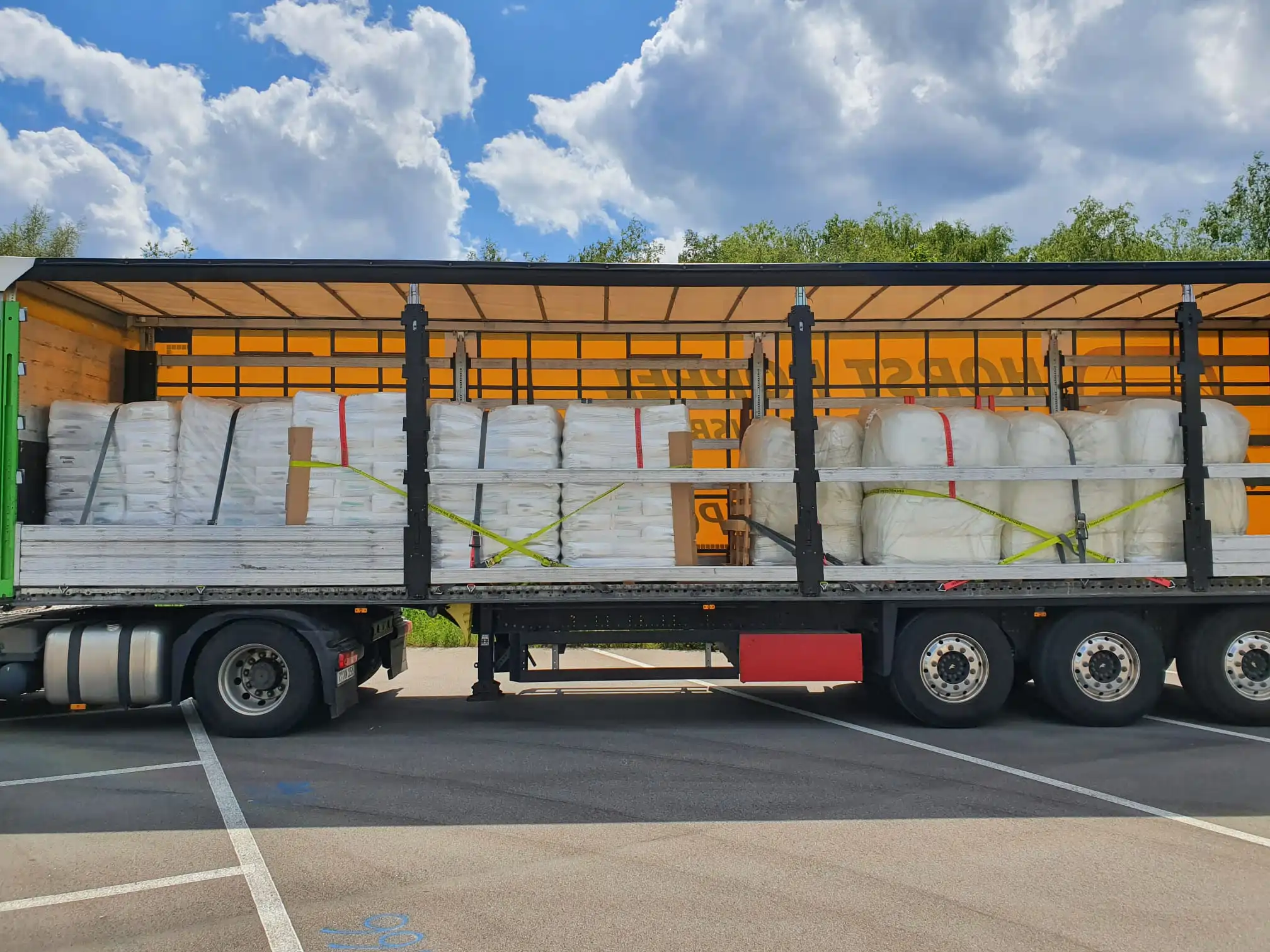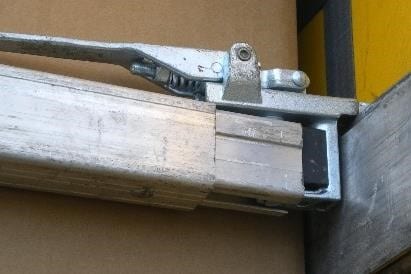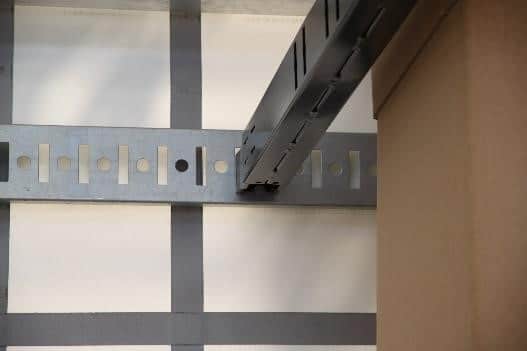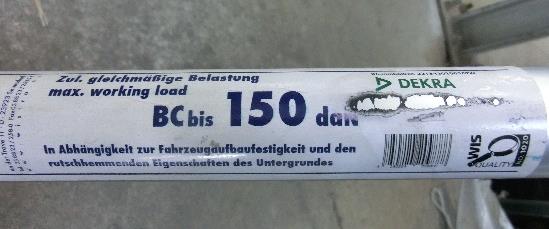
Now 10% off all Ergolash lashing straps save now! Voucher code: ergo10 | Valid until 31.05.2025
The most common means of transportation in Europe today is the semi-trailer.
Compared to articulated trucks, it has the advantage of a continuous loading area, a larger payload and it is easier to maneuver.
In this article, I will discuss problem treatments in connection with securing devices for this type of structure.

The major manufacturers such as SchmitzCargobull, Krone and Kögel build their trailers with comparable loading dimensions.
The loading width is predominantly 2.48 m, the loading length 13.60 m and the loading heights 2.70 m.
Deviations are possible depending on the body type, but are irrelevant for the problem illustration.
The inner drawer width is based on the dimension of the Euro pallet.

The congestion pattern can be illustrated using the adjacent graphic. With an inner load width of 2.48 m, this results in a total gap of 8 cm, divided into 3 or 4 gaps, depending on how stowage is carried out.
The maximum number of pallets can also be calculated from this diagram.
Stowed lengthwise:
13.60 m / 1.20 m * 3 = 33 pallets
Stowed crosswise:
13.60 m / 0.80 m * 2 = 34 pallets
Lengthways or crossways is up to the observer, depending on whether he is arguing as a truck or forklift driver.
The technical payload of 27,000 kg specified in the certificates for the standard semi-trailer for calculating the body strength is of course not the weight that can be expected when loading.
The practical payload is the weight that can be loaded without overloading the vehicle. As an example, 25,500 kg can be calculated.
However, each company must determine this weight itself in order to have a reliable basis for planning, as this depends on various factors. For example, if the load weight can change within limits due to production.
To take the considerations further, the practical payload of 25,500 kg can be divided by the number of pallets. Calculated with 33 pallets, the average weight per pallet is 773 kg or with 34 pallets 750 kg.
As soon as the load units exceed this weight, the semi-trailer can no longer be fully loaded because it would otherwise be overloaded.
The following loading units are typical examples:
This means that in this constellation the truck is not completely full and the distance to the rear portal is greater than 15 cm. It may also be necessary to move the load away from the bulkhead and back due to the load distribution. At this point it is necessary to think about the way in which the load is secured.

There are only two variants:
Unfortunately, in practice the semi-trailer is often only equipped with clamping boards (intermediate wall locks) with a blocking force of just 400 daN, or in the box body with clamping rods with a blocking force of 150 daN. In most cases, this is not enough.
I would like to point out to all vehicle owners that §30StVO obliges them to equip their vehicles with safety devices. Their total securing forces should amount to at least 30% of the technical payload. If this is not the case, problems with load securing are inevitable.
Terminal board (intermediate wall fastener)
friction-dependent
Blocking force as good as new 400daN


Clamping beam
friction-dependent
Blocking force as good as new 800-1,000daN


Locking bar
vehicle-specific | positive locking
Locking force as good as new 1,000 – 4,500daN



Clamping rods
friction-dependent
Blocking force as good as new 150daN


It is therefore important that the responsible shipper thinks about how he wants/needs to secure his load before procuring transport space.
The vehicle-side, system-typical securing devices generally have the greatest securing forces. The means that can be used in different vehicle variants are often weaker.
If the above-mentioned variant 1 is not possible or cannot be implemented, variant 2 must be used. Variant 1 are securing devices that represent a form-fit securing method. As a rule, it is the simplest, safest and quickest method of securing the load.
The description of variant 2 will appear in one of the next LaSi blogs.

A good approach is to create a vehicle/equipment specification that is company-specific:
In another installment of the LaSi blog, I will discuss other special loads that can lead to the so-called domino effect.
Yours, Sigurd Ehringer
<< Previous article
Episode 32: Load securing with Code XL superstructures

Sigurd Ehringer
✔ VDI-zertifizierter Ausbilder für Ladungssicherung ✔ Fachbuch-Autor ✔ 8 Jahre Projektmanager ✔ 12 Jahre bei der Bundeswehr (Kompaniechef) ✔ 20 Jahre Vertriebserfahrung ✔ seit 1996 Berater/Ausbilder in der Logistik ✔ 44 Jahre Ausbilder/Trainer in verschiedenen Bereichen —> In einer Reihe von Fachbeiträgen aus der Praxis, zu Themen rund um den Container und LKW, erhalten Sie Profiwissen aus erster Hand. Wie sichert man Ladung korrekt und was sind die Grundlagen der Ladungssicherung? Erarbeitet und vorgestellt werden sie von Sigurd Ehringer, Inhaber von SE-LogCon.
Rothschenk assortment
Our customer center has only one goal: to turn your problems into solutions. Whether standard stowage cushions, bestsellers or load securing personally tailored to your needs -. we accompany you consistently from A as in field service to Z as in certification. That is our promise to you, as a leader in our industry.
We attach great importance to professional cargo securing. That is why we have our own production, which ensures reliable operation through modern manufacturing technologies and strict quality control. Thus, we offer our customers a comprehensive and high-quality range of services in the field of transport logistics.
DIN ISO 9001:2015, EMAS and Ecovadis are not foreign words to you? Then it's time to work with the best.
You don't take any risks with us - we have been awarded the Platinum Medal on the EcoVadis sustainability rating platform.
As a load securement company, we are proud to have several certifications that validate our sustainability efforts and our commitment to environmental protection and social responsibility. For you as a purchaser, this means that we demand and promote the implementation of high environmental and social standards both within the company and along the supply chain.
You are currently viewing a placeholder content from Google Maps. To access the actual content, click the button below. Please note that doing so will share data with third-party providers.
More Information